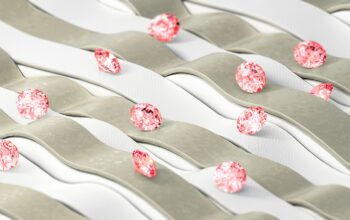Red light therapy (RLT), a burgeoning field within the realm of photomedicine, has captivated the attention of both scientific investigators and wellness enthusiasts alike. Numerous anecdotal reports claim transformative outcomes, from enhanced skin rejuvenation to accelerated wound healing, raising a fundamental question: is red light therapy a mere placebo, or does it possess tangible therapeutic potential? This inquiry necessitates an exploration not only of the underlying physics of RLT but also of the broader implications within the context of health and vitality.
At its core, red light therapy employs specific wavelengths of light—predominantly in the range of 600 to 900 nanometers—to elicit biological responses. This particular spectrum is non-ionizing, meaning it does not possess enough energy to break molecular bonds or cause cellular damage, in contrast to ultraviolet radiation. The physics underlying RLT pertains to the interaction of photons with biological tissues. When these light waves penetrate the skin, they interact with chromophores—molecules that absorb specific wavelengths of light, such as cytochrome c oxidase in the mitochondria. This interaction has been theorized to enhance adenosine triphosphate (ATP) production, augmenting cellular metabolism and facilitating tissue repair.
One of the most compelling aspects of RLT resides within the sphere of photobiomodulation. This term encapsulates the process through which light energy stimulates cellular activity. Studies have indicated that this form of stimulation can lead to reduced inflammation and pain, enhanced collagen synthesis, and even accelerated muscle recovery. Researchers have sought to quantify the efficacy of RLT through clinical trials, varying parameters such as light intensity, duration of exposure, and the specific wavelengths used. These investigations lend credence to the notion that red light therapy may possess a legitimate physiologic capacity beyond mere psychological effects.
However, one must not overlook the psychological dimensions intertwined with the therapeutic experience. The placebo effect is a well-documented phenomenon in the medical literature, whereby a patient experiences a perceived improvement in their condition due to their beliefs and expectations rather than the treatment itself. With RLT, the experience of light therapy sessions—often imbued with a sense of holistic practice and self-care—can foster a therapeutic milieu conducive to psychological healing. The mere act of engaging in a treatment ritual that one believes is efficacious may potentiate genuine physiologic change, further complicating the narrative.
Compounding the fascination with RLT is the expanding repertoire of applications spanning aesthetic medicine to athletic training and rehabilitation. Numerous clinical studies have highlighted its utility in treating acne, psoriasis, and other dermatologic conditions. It has gained popularity among athletes aiming to optimize recovery times and enhance performance. The prospect of using light to heal the body has evoked a sense of wonder—the idea that a modality so fundamentally simple can yield profound benefits has a certain allure that resonates with both laypeople and scientists alike. Yet, it is crucial to approach these applications with a discerning eye, ensuring claims are supported by robust scientific scrutiny.
Despite the enthusiasm surrounding RLT, debates persist regarding its efficacy and safety. Critics caution against the proliferation of unregulated devices marketed for home use, which may lack the rigor of controlled scientific validation. Questions linger about the long-term implications of exposure to light therapy, especially at higher intensities or over extended periods. Such concerns underline the necessity for comprehensive research to delineate appropriate protocols and ensure user safety. Regulatory bodies, including the FDA, continue to grapple with the implications of device approval and the ethical marketing of these technologies.
A significant contributor to the fascination with RLT is its accessibility. Many individuals find the prospect of an easy, non-invasive treatment appealing, particularly in an age when conventional medical solutions are often invasive and laden with side effects. The democratization of health technology, manifested in the proliferation of at-home light therapy devices, revitalizes ancient human predilections for natural remedies. It invites introspection about the intersection of technology, nature, and healing as individuals become empowered to explore alternative options for enhancing well-being.
The dialogue surrounding red light therapy thus compels a deeper inquiry into the fundamental laws of physics as they pertain to biophysics and clinical application. It beckons us to examine not merely the mechanistic pathways but also the philosophical implications of health. One must ponder: if the very act of believing in the efficacy of a therapy can invoke healing, what does this reveal about the interrelation between the mind and body? As science commences to elucidate the intricate machinations of human health, it is essential to maintain a holistic perspective that integrates the physiological, psychological, and philosophical domains.
In summation, red light therapy occupies a pivotal nexus of intrigue bridging diverse disciplines. It compels us to question the paradigms of medicinal efficacy and illuminates the potential that lies at the intersection of science, belief, and healing. As researchers continue to dissect and validate its myriad applications, red light therapy stands poised on the precipice of either becoming a celebrated pillar of modern therapeutic practices or a cautionary tale of misplaced faith. The ensuing studies and societal perceptions will undoubtedly guide its trajectory through the complex landscape of health and wellness.












